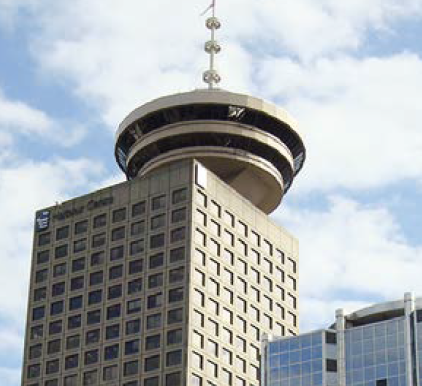The Straight Line Newsletter — Issue #3
This is the third issue of The Straight Line, a newsletter that will appear occasionally throughout the year. Articles will cover a broad range of topics that will engage anyone with an interest in the profession, including Ontario architects insured by Pro-Demnity, other OAA members—whether in practice or engaged in other businesses—and others.
We encourage readers to suggest topics for future issues of The Straight Line. Please send any suggestions to: editor@pd-straightline.com
In This Issue

Photo: Kelam, 7 August 2011, Wikimedia Commons
Privest v. Foundation Company of Canada
For many decades up until the late 1970s asbestos was a common component in many commercial or household goods, as well as in products and systems selected or specified by architects for use in buildings.
However, by the late 1970s, asbestos had been confirmed as a health hazard, the use of asbestos-containing products in buildings had been largely discontinued or banned in Canada, and non-asbestos- containing products were being substituted as replacements.
Harbour Centre was the building that featured in the landmark Privest v. Foundation Company of Canada decision that is the subject of this issue.
— The Editor
How Privest v. Foundation Company of Canada helped save architects and others from asbestos property claims in Canada.
The identification of asbestos as a health hazard and the restrictions on its use has given rise to extensive property litigation in North America. This litigation relates to its previous use in existing buildings, where, in order to eliminate the health hazard to occupants and workers, owners were faced with extensive removal or abatement measures.
The risk of claims against architects who may have specified asbestos-containing products in already existing buildings was potentially catastrophic—for the profession and for its insurers. In response, many insurers excluded asbestos-related claims from coverage, leaving architects and engineers personally exposed to significant damages if these claims were successful.
Against this backdrop, the OAA Indemnity Plan (now Pro-Demnity Insurance Company) successfully defended an Ontario architect in an action in British Columbia. Leave to appeal the decision was ultimately denied by the Supreme Court of Canada. One asbestos expert described the outcome of Privest on liability for past use of asbestos as “not only killing the beast, but double- nailing the coffin.”
The following article by one of the participants describes the story as it unfolded.

Our Contributor

Bernie McGarva has been a partner of the firm of Aird & Berlis LLP since 1992. He practices in the area of commercial and construction litigation. He is certified by the Law Society of Upper Canada as a Certified Specialist in Construction Law and is recognized in The Best Lawyers in Canada in the field of Construction Law.
He has appeared before tribunals and all levels of the court, including the Supreme Court of Canada. He has served as a mediator in over 500 disputes focusing on construction, commercial contracts, insurance, and professional errors and omissions.
Bernie can be contacted at:
Aird & Berlis LLP
Brookfield Place, 181 Bay Street,
Suite 1800, Box 754, Toronto, ON M5J 2T9
Telephone: (416) 865-7765
bmcgarva@airdberlis.com
The Straight Line is a newsletter for architects and others interested in the profession. It is published by Pro-Demnity Insurance Company to provide a forum for discussion of a broad range of issues affecting architects and their professional liability insurance.
Publisher: Pro-Demnity Insurance Company
Editor: Gordon S. Grice
Design: Finesilver Design + Communications
Address: The Straight Line c/o Pro-Demnity Insurance Company 200 Yorkland Boulevard, Suite 1200 Toronto, ON M2J 5C1
Contact: editor@pd-straightline.com
Pro-Demnity Insurance Company is a wholly owned subsidiary of the Ontario Association of Architects. Together with its predecessor the OAA Indemnity Plan, it has provided professional liability insurance to Ontario architects since 1987.
Questions related to the professional liability insurance program for Ontario architects may be directed to Pro-Demnity Insurance Company. Contact information for the various aspects of the program can be found on the Pro-Demnity website: www.prodemnity.com
Pro-Demnity Insurance Company makes no representation or warranty of any kind regarding the contents. The material presented does not establish, report or create the standard of care for Ontario architects. The information is by necessity generalized and an abridged account of the matters described. It should in no way be construed as legal or insurance advice and should not be relied on as such. Readers are cautioned to refer specific questions to their own lawyer or professional advisors. Letters appearing in the publication may be edited.
Efforts have been made to assure accuracy of any referenced material at time of publication; however, no reliance may be placed on such references. Readers must carry out their own due diligence.
This publication should not be reproduced in whole or in part in any form or by any means without written permission of Pro-Demnity Insurance Company. Please contact the publisher for permission: publisher@pd-straightline.com

